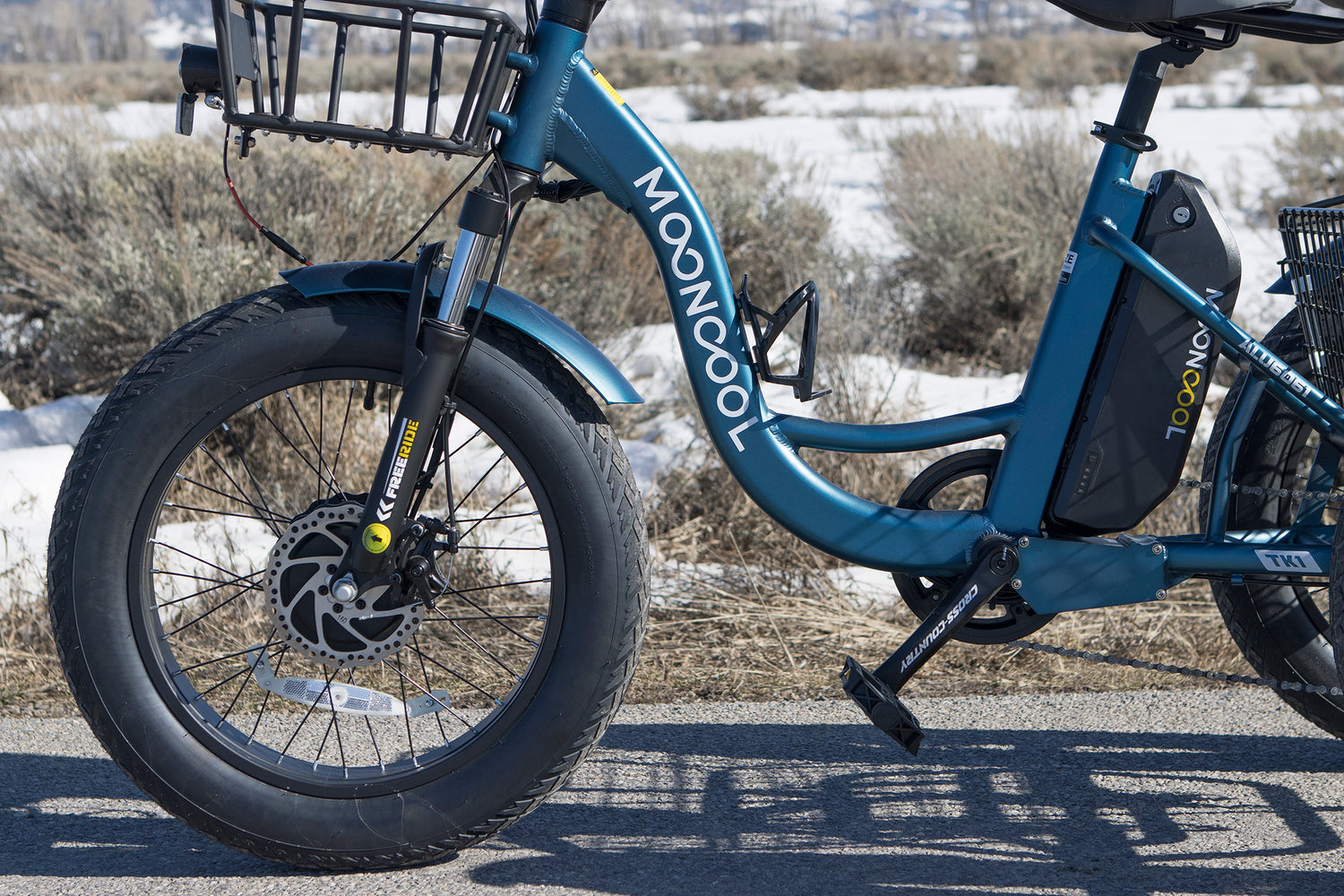Maintaining battery health in electric trikes is crucial. If you look after your electric trike's battery correctly, it will last much longer, providing many years of enjoyment before you need to replace it.
In this article, we will go through the best things to do to keep your electric trike's battery as healthy as possible.
Understanding Your Electric Trike's Battery Life Span
Before we go into electric trike battery care, let's talk about how long a battery should last. You can only charge electric trike batteries so many times, and each time is called a "charge cycle."
A charge cycle is when a battery is depleted of any amount of energy and then fully recharged. Most electric trike batteries are rated to about 1000 charge cycles, but you'll come across those with more or less. You'll notice a reduction in range the closer you get to the end of your battery's lifespan, as it won't hold charge as well as when it was new.
But with maintenance and care, you can make your electric trike battery last a long time. In fact, the other components on your trike are more likely to wear out before your battery dies.
Battery Maintenance For Extended Life
Battery Maintenance In High Summer Temperatures And The Cold
When your electric trike battery is left in hot temperatures or direct sunlight, its lifespan can be reduced. This is because heat degrades the battery. Additionally, it speeds up the chemical reactions inside the battery, causing it to wear out prematurely.
Batteries don't fare well when left out in the cold, either, as prolonged exposure to extreme cold can damage the cells. Therefore, if possible, bring your battery inside when you're not riding. It's okay to take a room-temperature battery outside and go for a wintery ride. But you may notice a loss in performance if it's freezing, meaning your battery won't produce quite as much power.
The bike might feel sluggish and have a reduced range, too. We recommend insulating the battery if you know you will be out for a while. You can insulate the battery with a thermal sleeve for protection.
All in all, you should avoid exposing your electric bike battery to extreme temperatures if you can help it. It's best to remove the battery from the bike to help its performance and overall longevity.
Key Points For Long-term Battery Storage
To ensure your battery lasts as long as possible, you need to store it in a specific way. Different voltages will actually cause different things to happen within the battery. Typically, most batteries will slowly drain or lose voltage over time, so you do not want to leave your battery completely empty for weeks or months.
After leaving a battery empty for a while, it may not charge when you plug it in. This could be because the cells have gradually dipped below the lowest safe voltage to charge, so you must replace it.
Your battery will be fine if you leave it fully charged for a few days. But you must partially charge it if you know you'll leave it unused for a few months. It's best to charge your electric trike battery to around 70%, as this keeps the cells balanced, as they're not stressed by too much or too little charge.
As mentioned earlier, ensuring your battery isn't too hot or cold is essential. So, don't leave the battery mounted to your trike if you keep it in a cold garage or shed. Keeping the battery dry is also important, as the contact terminals may corrode.

Tips To Extend Battery Life Span
We've already talked about partially charging before long-term storage. But there are a few other things to consider when charging your battery. Here are some tips for maintaining battery health in electric trikes:
Avoid Overcharging
Overcharging can damage the battery over time. To prevent this, use a charger with an automatic shut-off feature. Alternatively, you can use a timer that cuts the power to the charger after a few hours.

Don't Let The Battery Fully Deplete
Obviously, this isn't always possible, but if you can, avoid letting your battery fully deplete. To help maintain your battery's health, it's best to charge it before it drops below 20%. Therefore, you may want to plan your rides to avoid completely draining the battery.
Use the Correct Charger
Always use the charger that comes with your electric trike. Different chargers might not be compatible and can damage the battery. If you need to replace the original charger, buy the same model from the manufacturer rather than a cheaper aftermarket one.

Regular Inspections
Regularly inspect your battery for signs of wear or damage. Catching issues early can prevent bigger problems. Issues can include damage to the casing, bent or corroded terminals, or faulty mounting points that could cause the battery to drop out unexpectedly.

Clean Battery Terminals
Dirty or corroded battery terminals can cause a bad connection. Therefore, you should always keep the battery terminals clean and free of debris.
Firmware Updates
Occasionally, electric trike manufacturers release firmware updates. These address known problems but also improve performance and battery life. So, if your trike has the capability, it's worth keeping up with these updates.

Protect Your Battery From Water
You can ride your electric trike in the rain, but it is only waterproof to a point. You may encounter problems if you ride all day in heavy rain, especially if there are lots of deep puddles. You must always avoid submerging your electric trike to protect the electrical components. Additionally, avoid washing your trike with pressurized water, as the water can be forced into its delicate parts.
Final Thoughts On Maintaining Battery Health in Electric Trikes
As you can see, there's not much to worry about when it comes to maintaining battery health in electric trikes. The most important aspects of looking after your battery are using proper charging methods, storing it correctly, keeping it dry, and regularly checking it for damage.




Leave a Comment
This site is protected by hCaptcha and the hCaptcha Privacy Policy and Terms of Service apply.